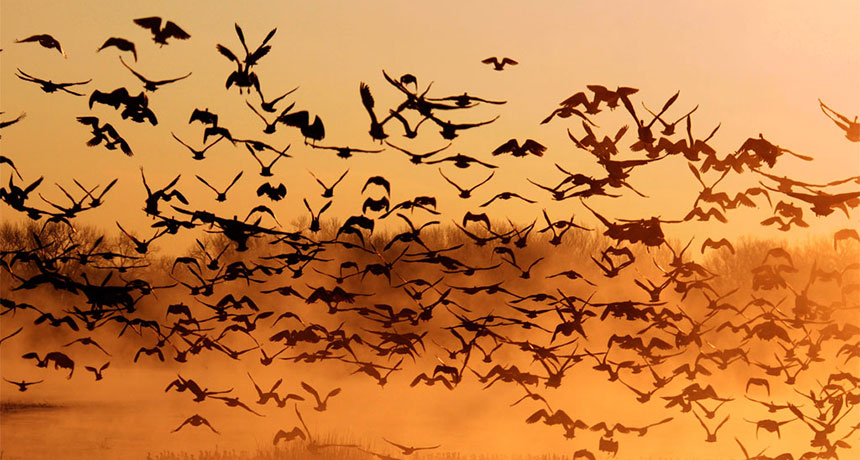Like birds of a feather, sperm flock together

BALTIMORE — When it comes to swimming sperm, it’s not every man for himself. Instead, sperm form groups that swim together, a bit like schools of fish or flocks of birds, physicists have observed.
Understanding the physics underlying such behavior in animals is difficult because their actions arise in part from cognitive processes — birds, for instance, can see what their neighbors are doing and adjust their flight path accordingly. But with sperm, group swimming emerges from the physics of the medium in which they swim, Chih-Kuan Tung of North Carolina A&T State University in Greensboro said in a news conference March 16 at a meeting of the American Physical Society. That makes sperm a simpler system for studying the physics behind a form of coordinated biological action. “They don’t think,” Tung said. “So whatever interaction is happening, we can quantitatively describe it.”
Sperm don’t form groups in ordinary water, Tung said, but they do in viscoelastic fluids such as the mucus of mammalian reproductive tracts. A viscoelastic fluid combines resistance to flow with the ability to restore its previous state when disturbed. Tung and colleagues created such elasticity by adding a polymer to the fluid used for testing the swimming ability of bulls’ sperm. Those experiments showed that it’s the elasticity, not the viscosity, that encourages collective swimming.
Further work will be needed, Tung said, to determine whether such group swimming confers an advantage to sperm seeking an egg. In any event, the new understanding of sperm dynamics could lead to improved methods for in vitro fertilization procedures, he said.